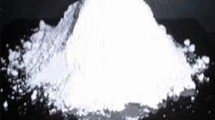Abstract
This study employs the following operating conditions: constant pressure (5 MPa), sintering temperature (800–1100 °C), sintering time (2 h), percentage of solar panel waste glass by weight (0–40 %), and the rate of heating was 5 °C/min, to fabricate clay tiles. The sintered samples were characterized to determine their porosity, water absorption, and mechanical strength. Fired samples were microstructurally analyzed by X-ray diffraction and scanning electron microscopy. Increasing the temperature resulted in a rise in the resistance to abrasion in the tiles. Solar panel waste glass promotes a more effective melting of quartz, leading to a more abundant and less viscous liquid phase, which accelerates the sintering kinetics. In conclusion, solar panel waste glass can be used at 30–40 % with tolerable modifications of the technological behavior and performance of ceramic tiles. Solar panel waste glass has a high content of total fluxing oxides that favor the maturation of the ceramic tile at lower sintering temperatures. Therefore, this waste glass is a good substitute for feldspar in stoneware tile products, as it satisfies the most demanding requirements of the CNS 3299 standard.




Similar content being viewed by others
References
Taiwan Environmental Protection Administration (2012) http://edb.epa.gov.tw/Index_waste.htm
Liao YH (2009) A study on the material flow and management of solar cell and panel in Taiwan. Master thesis, Institute of Environmental Engineering and Management (in Chinese)
Braganca SR, Vicenzi J, Guerino K, Bergmann CP (2006) Recycling of iron foundry sand and glass waste as raw material for production of whiteware. Waste Manag Res 24:60–66
Hwang J, Huang X, Garkida A, Hein A (2006) Waste coloured glasses as sintering aid in ceramic tiles production. JMMCE 5(5):119–129
Furlani E, Tonello G, Maschio S (2010) Recycling of steel slag and glass cullet from energy saving lamps by fast firing production of ceramics. Waste Manag 30(8–9):1714–1719
Asquini L, Furlani E, Bruckner S, Maschio S (2008) Production and characterization of sintered ceramics from paper mill sludge and glass cullet. Chemosphere 71:83–89
Maschio S, Furlani E, Tonello G, Faraone N, Aneggi E, Minichelli D, Fedrizzi L, Bachiorrini A, Bruckner S (2009) Fast firing of tiles containing paper mill sludge, glass cullet and clay. Waste Manag 29:2880–2888
Yurkov AL, Sarkisyan TA, Ivanov DA, Bradt RC (1997) Final stages of sintering of ceramic materials: effect of residual porosity and microstructure on mechanical characteristics of surface. Ceram Int 23(5):289–399
Cheng C, Hsieh Y, Yang C (1996) Effect of glass doping for the sinterability of Ba(Mg1/3Ta2/3) O3 ceramics. J Mater Process Tech 59(4):297–302
Yalcin N, Sevinc V (2000) Utilization of bauxite waste in ceramic glazes. Ceram Int 26:485–493
Paul A (1990) Chemistry of glasses. Chapman and Hall Ltd., London
Kingery WD (2004) Introduction to ceramics. Wiley, New York
Papargyris AD, Cooke RD (1996) Structure and mechanical properties of kaolin based ceramics. Brit Ceram Trans 95(3):107–120
Appendino P, Ferraris M, Matekovits I, Salvo M (2004) Production of glass-ceramic bodies from the bottom ashes of municipal solid waste incinerators. J Eur Ceram Soc 24:803–810
Author information
Authors and Affiliations
Corresponding author
Rights and permissions
About this article
Cite this article
Lin, KL., Lee, TC. & Hwang, CL. Effects of sintering temperature on the characteristics of solar panel waste glass in the production of ceramic tiles. J Mater Cycles Waste Manag 17, 194–200 (2015). https://doi.org/10.1007/s10163-014-0240-3
Received:
Accepted:
Published:
Issue Date:
DOI: https://doi.org/10.1007/s10163-014-0240-3




